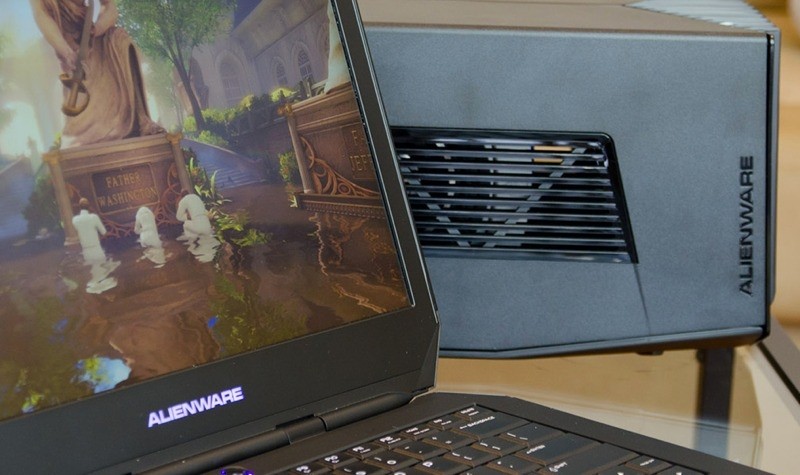One of the main issues with gaming laptops is the limitations of the form factor. You simply can’t put as powerful hardware as a desktop gaming PC in a laptop chassis, due to constraints on thickness, portability and (most importantly) cooling. The general lack of upgradeability, especially where the main processing components are concerned, also reduces their appeal.
This is why the Alienware 13 is such an interesting laptop. It’s not because of the internal components in the laptop itself, or the form factor, but because of an optional accessory called the Graphics Amplifier. The Amplifier is a box that houses a standard desktop GPU and power supply, which attaches to the Alienware 13 through a cable. When it’s plugged in, the mobile GPU in the laptop is disabled, and all the GPU power comes from the Amplifier.
The Graphics Amplifier addresses those two main complaints: you get essentially the same power as a typical gaming desktop when docked, and a level of upgradeability otherwise not possible.
